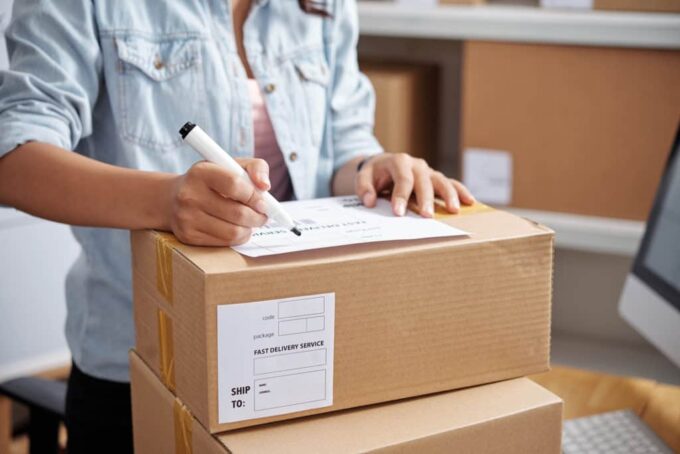Being a vendor on Amazon can mean that sometimes your profits are out of your control. Although Amazon states that it honours any Minimum Advertised Price (MAP) request by vendors, there have been complaints that this isn’t always the case and in some cases Amazon will sacrifice the MAP in order offer their customers the lowest price, remember the Amazon flywheel pivots on a customer first strategy!
However, this doesn’t mean that all is lost for vendors when it comes to profitability, after all, there wouldn’t be so many vendors if the opportunity to make money wasn’t there. This article gives a few ways in which Amazon vendors can help improve their profitability long term as a vendor on Amazon.
Consider introducing bigger packs & bundles

Source: pingpongx.com
One way to improve your profitability as a vendor is to offer bigger ‘value’ packs and bundles of your existing products. For example, if your product is something like detergent pods, offering a larger individual pack size or a bundle of your regular packs will not only drive up the average order value, as consumers will consider spending more than originally planned in order to save in the long run, but it offers the end customer a competitive price and therefore an incentive to shop online. You may even find these customers return for this same deal, foregoing this purchase at a brick and mortar shop long term.
This tactic aims to increase your profitability by increasing your average selling price while lowering your variable costs, such as shipping and packaging. When the bundle sees volume sales, the savings realised are much more apparent.
Restrict or revise offers to retail partners
As a vendor you are likely a brand owner or manufacturer, meaning you are likely to have your fingers in a few pies. An issue arises when these other retail partners and Amazon clash to have a detrimental effect on your profits.
In order to secure bulk orders from retail partners, it is common practice for vendors to offer incentives or discounts to secure a higher volume order. This discount allows retailers to lower their prices in order to compete with the likes of Amazon. Amazon prices their products based on the current market price, if other retailers that are selling your products are offering a lower price, consumer-first minded Amazon will also cut their price in order to offer their customers the best online. This then affects the price they pay for your products, eating into your profits.
It is then in the best interest of vendors to consider this issue when offering their discounts and opt to control or restrict what incentives are offered and how they will impact your profits in the long run. It might seem counter productive and the fear often is that you’ll damage your relationship with your retail partners. However, if the end result is an increase in profitability, then it shouldn’t worry you being more steadfast in your negotiation.
Only focus on profitable products

Source: thesellingfamily.com
Amazon usually wants to offer your whole catalogue of products on their marketplace, but will not actively tell you if a listing is unprofitable. Sometimes this realisation only happens when Amazon sends through a charge to make up the difference for underperforming products, which not only affects your profitability, but sees you losing money too.
It is important for long term success that vendors monitor the performance of all of their products being sold by Amazon on a regular basis. This allows you to spot products which are at risk of under performing allowing for either intervention to improve the listing or enable you to remove it before it becomes a cost.
Not only can unprofitable products cost you money, they can also pull focus from the profitable listings too. You could be putting advertising spend into some of these products which are not returning a profit which is a wasted budget, or they could be diluting your brand traffic. Either way, it is best to nip these listings in the bud and remove them from your catalogue of products.
Use your Annual Review with your Vendor Rep to get a Better Deal
Each year, as a Vendor, you will have a scheduled review in which can you, to an extent renegotiate your terms with your Amazon Vendor Agent. Your agent (or rep) is there to help answer your questions and help you develop your business in relation to Amazon.
Your Agent’s role in the yearly review is to secure the best deal for Amazon moving forwards. However, presenting the argument explaining to Amazon that if they help you reduce costs, that you will pass the savings onto their customers can go a long way.
Amazon can work with you on ways to reduce chargebacks, improve margins and increase efficiency moving forwards. Sometimes, they can even offer help with marketing costs through Amazon’s various cost-per-click advertising platforms, which will ultimately drive more traffic and sales for everyone.
Spend some time optimising your product listings

Source: sellics.com
One quick way to increase profitability is to work on optimising your best performing product listings better. Small, incremental improvements will increase volume of sales. Optimisations might include:
- Product titles
- Hidden keywords
- Images
- Product descriptions
Many guides exist online around amazon seo, (click here to visit the arthia.co.uk knowledge hub to learn more).
Work with experts on a profit first strategy
You wouldn’t be judged for admitting that finding success on Amazon is difficult. Their model is fairly unique and the competition is brutal. This is why those struggling to turn a decent profit on the marketplace should invest in enlisting the help from experts in Amazon.
By using some budget to hire an Amazon agency, vendors can get assistance in the development of a business strategy from those that are well versed in Amazon’s policies and best practices. This strategy can help vendors know where they should and and shouldn’t be focusing in order to improve their profitability – across all areas including logistics, product presentation, optimisation, account management and online advertising, and negotiating the best terms with Amazon for Vendors.







